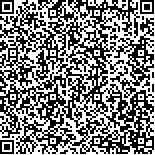下载中心
优秀审稿专家
优秀论文
相关链接
首页 > , Vol. , Issue () : -
摘要

滨海湿地盐沼植被区域碳储量的准确估算,对掌握湿地碳库资源状况、评估湿地固碳增汇潜力具有重要意义。传统的野外清查方法成本高昂且耗时耗力,而仅使用卫星或无人机的遥感反演方法则受限于影像空间分辨率或空间覆盖范围。本文通过分段反演建模的方法分别构建三种盐沼植被的实测地上生物量数据到无人机影像的反演估算模型,以及无人机地上生物量数据到Sentinel-2卫星影像的反演估算模型,并利用碳系数计算植被碳储量、土壤碳储量和总碳储量,实现了星空地协同的地上生物量和碳储量估计和制图。研究发现,互花米草、芦苇、其他盐沼植被的地上生物量反演模型的决定系数R2分别达到了0.48、0.42、0.45,均方根误差RSME分别为613.89 g·m-2、650.6 g·m-2、624.03 g·m-2,相比于直接使用Sentinel-2卫星反演模型估算精度提升明显。研究区三种盐沼植被覆盖区域的总面积为111.47 km2,总地上生物量为3.09×105 t,总碳储量为1.68×106 t,碳汇价值达到1.78亿元。研究表明,结合无人机和卫星遥感的各自优势,能够有效弥补地面样本数据不足的缺陷,大幅提高滨海湿地碳储量估算精度和估算范围,实现低成本、大尺度、高精度的湿地碳储量监测。
Accurate estimation of carbon stock in coastal wetland salt marsh vegetation areas is crucial for understanding the status of wetland carbon pool resources and assessing the carbon sequestration potential of wetlands. Traditional field inventory methods are costly and laborious, while remote sensing inversion methods relying solely on satellites or unmanned aerial vehicles (UAVs) are constrained by the spatial resolution and coverage of the imagery. This study employed a two-step inversion modeling approach to construct models that translate measured aboveground biomass (AGB) data of three types of salt marsh vegetation to UAV imagery, and subsequently to Sentinel-2 satellite imagery. Carbon coefficients were then used to calculate vegetation carbon storage, soil carbon storage, and total carbon storage, achieving a synergistic estimation and mapping of AGB and carbon storage. The findings indicate that the determination coefficients (R2) for the AGB inversion models of spartina alterniflora, phragmites australis, and other salt marsh vegetations reached 0.48, 0.42 and 0.45, respectively, with a root mean square error (RSME) of 613.89 g·m-2, 650.6 g·m-2 and 624.03 g·m-2, respectively. The total area of salt marsh vegetation in the Ningbo coastal wetland is 111.47 km2, with a total aboveground biomass of 3.09×105 t and a total carbon stock of 1.68×106 t, resulting in a carbon sequestration value of 178 million RMB. The study demonstrates that integrating UAV and satellite remote sensing can effectively compensate for the lack of ground sample data, significantly enhancing the precision and scope of carbon stock estimation in coastal wetlands and enabling low-cost, large-scale, high-precision monitoring of wetland carbon storage.

